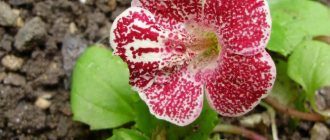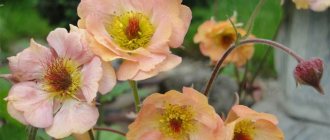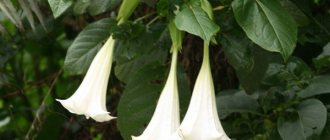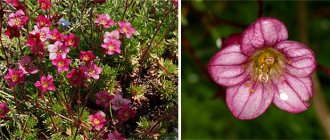Euphorbia will forgive the gardener even the greatest negligence and forgetfulness. These decorative succulents can be grown at home in pots and garden beds. They are distinguished by remarkable species variability, so it is not difficult to find a variety that will fully satisfy our aesthetic requirements. Some ornamental species grow in gardens, others are weeds. Find out how to grow perennial garden spurge - planting and care, plant propagation.
Description of the plant
There are about 2 thousand species of plants in the genus Euphorbia in the world, belonging to the Euphorbia family of the same name. The vast majority are heat-loving succulents, shrubs and trees found in Africa. But in our country you can find more than 20 wild species.
It is difficult to characterize Euphorbia and describe the botanical characteristics of the genus, because its species are diverse, some resemble meadow perennials, others resemble exotic cacti. Among them there are annual, biennial, and perennial plants. The height reaches from several tens of centimeters to 1.5 meters!
The only common feature of all species is the unusual inflorescence, which consists of a nondescript flower containing one stamen and one pistil, surrounded by colorful and beautiful leaves that are often confused with flowers. They take on shades ranging from neutral greens and yellows to reds and oranges and last for months. The humble flowers have the ability to lure winged insects.
There are some dangers to milkweed in the wild and garden that you need to be aware of. Its stems and leaves contain milky sap, a highly toxic substance previously used in folk medicine to treat warts and freckles, but it poses a serious health hazard.
Euphorbic acid, rubber and cyanogenic compounds present in the milky sap cause changes in the skin, including blisters, ulcers, and can cause temporary blindness if it gets into the eye. The result of ingestion is vomiting and diarrhea. The plant should not be within the reach of small children! Adult gardeners should wear protective gloves for any job. Be careful not to get the juice into your mouth, nose or eyes.
Attention! People who are allergic to latex should take special care when coming into contact with milkweed.
Natural habitat
Favorable for such types of milkweed as marsh, steppe, spicy and for weeds.
Euphorbia weed
It is a herbaceous annual. Its stem is quite juicy. It reaches a height of a quarter of a meter. Flowering begins in early summer and ends in autumn. The bell-shaped inflorescences are colored in shades of red. Grows in European and Asian countries.
Bolotny
This is a herbaceous perennial spurge, reaching a height of half a meter to a meter. Its stems are straight with an abundance of oblong leaves. The inflorescences resemble an umbrella. Distributed mainly in semi-deserts and temperate climates.
Euphorbia steppe
In the Russian Federation, steppe spurge can be seen on the banks of the Volga and Don, on the Caucasian slopes. In Ukraine, it grows in forest-steppe and steppe zones. Prefers limestone and chalk soils. It is a herbaceous perennial with an erect stem. Flowering lasts all summer.
Euphorbia acute
Also from the category of herbaceous plants. It blooms with small yellowish flowers. It is very tenacious and can adapt to any soil. Regenerated from the smallest root. It is extremely dangerous because it sucks out nutrients and moisture from the soil, depriving others of this advantage. It is quite difficult to eradicate it.
Next you can see the types of street milkweed in the photo:
Soil requirements
Euphorbia is grown in well-drained soil in full sun. Some species can grow in light shade during the day. Grown as an ornamental plant, almond milkweed (Euphorbia amygdaloides) grows in semi-shady areas.
Some species, such as Euphorbia palustri, prefer a fairly moist substrate, but most prefer dry or moderately moist, well-drained soil. M. Griffith is more demanding, requiring humus, moist, acidic soil.
These extremely tolerant plants grow well in most soil types, including dry, sandy soils. Only loamy soils are not suitable for all species. The ideal soil reaction should be slightly acidic, possibly neutral.
For milkweed in pots, it is better to purchase a special mixture of substrate for cacti and succulents.
When buying milkweed, it is better to learn about the needs of a particular species. The closer we select a planting site according to the conditions that are natural for a particular species, the better the plant will grow.
How often does flowering occur?
The regularity of flowering of each species is purely individual. Most often, milkweed blooms once or twice a year, but some representatives can bloom throughout the year.
When does it start?
Euphorbia can bloom in any season, from early spring to early winter. The most popular period is mid and late summer. There are also winter species of eurphorbia that bloom, for example, at Christmas.
How long does it last?
Each species has its own flowering time. This could be one or two months, or maybe the whole year.
Landing
Most types of milkweed can be sown as seedlings in pots at home. In garden stores you can buy small seedlings that grow to impressive sizes when planted. Euphorbia is planted in open ground so that it has a lot of space around it, even if it does not look attractive at first. Euphorbia seedlings are planted in open ground when the risk of frost has passed (from mid-May). You can start growing at home at almost any time, although in winter most species go into hibernation and are best left alone.
Euphorbia tends to grow in all directions, which is not a problem; the shoots can be pruned at will at any time.
Appearance
It is quite difficult to answer the question of what milkweed looks like. And all because there are 2000 species. So, one type of milkweed may look like a cactus, another looks like a miniature palm tree, and a third looks like a bush or ordinary grass. There are only a few characteristics that unite all this diversity into one family.
- Stem. Very “fleshy”, like all succulents (plants that store water in the stem). Structure, length, color depend on the species. They often have clearly defined edges and scars from fallen leaves.
- The structure of the inflorescence. Each new flower seems to grow from the old one. The flower has no petals and consists of one twisted pistillate floret. Around are the remains of degenerate flowers - stamens, bracts. Blooms for a long time.
- Fetus. Ripens at the end of flowering. It looks like a triangular box with three seeds.
- Leaves. Usually dense, elongated, with reddish veins (but this is not a necessary condition).
- The presence of white milk when a leaf or stem is fractured. This is the only thing that is necessarily present in any type of milkweed!
Growing and care
Euphorbia will grow well without care. In the case of the Cypress species, its expansion should be limited. Euphorbia myrtifolia should be covered for the winter, it can freeze, and capitate prefers a more drained substrate.
Watering
Some euphorbias are succulents that can perfectly store water in their shoots. All species are drought-resistant and require relatively little moisture. Therefore, garden spurges do not need to be watered at all, but potted spurges need to be watered from spring until autumn, when the top few centimeters of the soil become quite dry.
In winter, water only when the plant seems slightly wilted.
Fertilizer
Milkweed is fertilized occasionally. You should think about them only when the lower leaves begin to noticeably turn yellow. Apply low doses of water-soluble fertilizer. As a rule, indoor plants require more nutrition than those growing in open ground; for garden milkweed, it is enough to add a handful of compost to the soil when planting.
Wintering, care in autumn
The frost resistance of milkweed varieties is very different, but perennial species, such as the well-known owner of pretty yellow flowers - Euphorbia multiflora (E. polychroma) tolerate even severe frosts well and do not require much protection for the winter. All types in the fall need to be covered with a small shelter - a layer of several centimeters; you can use spruce branches, bark, sawdust, leaves.
During winter thaws and early spring, evergreen species of milkweed should be protected from direct sunlight.
Euphorbia photo gallery
- Garden geranium
- How to create multi-tiered flower beds
- Colored stones - how to paint a cobblestone correctly
- Do-it-yourself swing for a summer house
- How to prevent cracks in ripening tomatoes
- Muscari - early flowers
- Phytophthora of tomatoes: signs and methods of control
- Onion fly - how to fight it
- Flowerbeds in the form of a tea set - cups and teapot
- Sedum - planting and care
- Aquilegia - a magical, unpretentious flower
- DIY country veranda
Reproduction
Euphorbia reproduces well on its own - new seedlings usually appear around the mother plant, which can be dug up and transplanted to the chosen location.
Propagation of milkweed by cuttings (shoots, roots) brings good results. To do this, cut off a piece of the stem or one of the shoots, place it in a peat substrate and keep it in light moisture, periodically lightly spraying water from a spray bottle. The box with cuttings must be covered with film to maintain high air humidity inside. The film must be removed and the seedlings ventilated once a day to prevent mold from appearing. When new green shoots appear and the seedlings take root, you can transplant them into a separate container.
Diseases, pests
A high level of humidity in the soil and air contributes to the development of fungal diseases in milkweed, so plants should be watered moderately, planted in ventilated places, and house plants should be planted in well-ventilated areas.
Euphorbia is resistant to most pests - few animals crave contact with its toxic milky sap or sharp leaves. Sometimes mealy bugs and spider mites are found on plants, which readily feed on the leaves, weakening them and slowly killing them. They have alarming reproduction rates, so early intervention is critical to saving the plants. The best means of combating these unwanted guests are considered to be special insecticidal preparations or aromatic oils.
Beneficial features
Euphorbia mile.
Photo Phytoncidoactive plant. Biologically active substances secreted by its cells reduce the concentration of pathogenic microorganisms in the air by almost 65%; have a detrimental effect on E. coli and staphylococcus.
In a room where milkweed is growing, people calm down and feel a surge of strength. The attractive appearance of the flower evokes pleasant emotions. The milky juice of milkweed is toxic, but in small doses it is used for medicinal purposes. Since ancient times, it has been used to whiten skin, remove calluses and warts.
Signs and superstitions
The spurge plant is believed to bring happiness to the home. By spreading powerful positive energy around itself, milkweed creates a favorable atmosphere and good relationships around itself. The energy of the flower improves immunity and lifts your mood.
Use in the garden
Euphorbias are mainly grown as indoor plants, which forgive the owner the usual forgetfulness. They look great on window sills and well-lit shelves. In the summer season, they can be taken out to the balcony or terrace, where they will create an aura of exoticism.
In the garden, milkweed grows well on rocky rocks, elevated flower beds, and ideally on sloping terrain.
Euphorbia can be combined with the following plants:
- sedums,
- girl's tansy,
- series,
- tulips,
- bush bulbina,
- mesembryanthemum.
Euphorbia myrtifolia grows well in sunny flower beds, in rock gardens, and on permeable substrate. Cypress species (Euphorbia cyparissias) and Euphorbia seguieriana (Euphorbia seguieriana) grow well in dry areas.
In general, milkweed is an ideal plant for beginning gardeners; it is easier to damage with too much care than without it. It is only important to choose a species that suits your aesthetic requirements and growing conditions, and if proper care is taken, the plant will become a wonderful addition to the garden.
Contents after disclosure
After blooming, it is necessary to cut the stems at a height of 10-15 cm from the root. It needs less water after flowering than during other periods.
And in May the plant should be transplanted into new soil with the same conditions. The water regime resumes in the spring after transplantation. Young shoots should be removed, then the flower will begin to branch and bloom more generously next time.
The Internet is full of recipes for feeding indoor plants. One of the recipes says: you need to take a liter of water at room temperature and 1 teaspoon of castor oil. Shake and immediately pour over the euphorbia.
For better consumption of fertilizing, the flowers must first be watered with plain water - this will help avoid burns to the root system of the plant.











